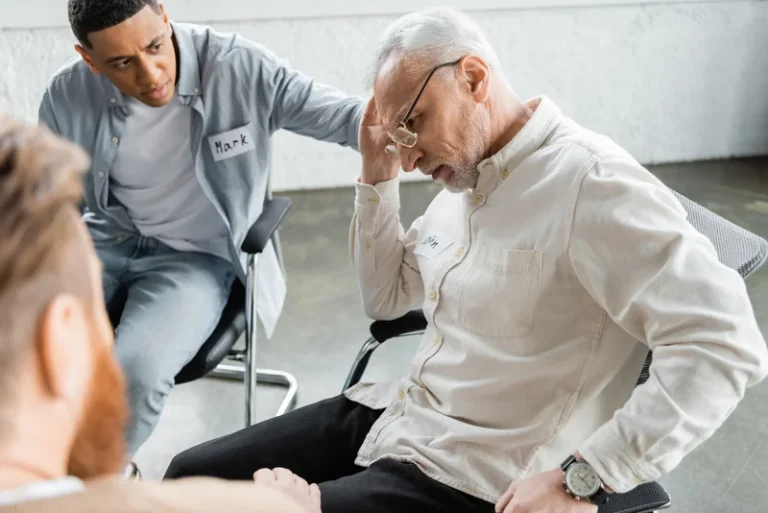
As mentioned above, rosacea sufferers usually experience flare-ups of the condition punctuated by periods of remission, where they do not have any symptoms for some time. One study published in the Journal of the American Academy of Dermatology 3 has shown that women who drink alcohol are more likely to develop rosacea than women who are teetotal. If you struggle with alcohol use and need professional help, contact us today to learn about our treatment options. Avoiding these triggers may help keep the scarring caused by rhinophyma at bay, and doctors may choose to treat rosacea https://ecosoberhouse.com/ and rhinophyma with anti-inflammatories and topical antibiotics.
Featured Programs

As well as drinking alcohol, particularly red wine, many things can worsen rosacea. For example, eating spicy foods, smoking tobacco, drinking tea and coffee, too much sunlight exposure, and more. The condition often known as a drinker‘s nose is not caused by alcohol. It is a combination of those with a family history of rosacea and those who struggle with skin conditions or certain skin disorders. Understanding the causes, symptoms, and treatments of alcoholic nose can empower you to take control of your skin health and seek the appropriate care. By debunking myths and focusing on comprehensive management, individuals can improve their quality of life and maintain healthier skin.
Tips to Prevent Alcoholic Nose
Not being able to stop drinking despite its negative consequences is one of the main signs of developing alcohol dependence. Even blockage of your nose due to malformation won’t cause any dangerous issues. It is uncomfortable and, in most cases, damaging to your appearance and self-esteem.

Outpatient Treatment
- Alcohol addiction is a serious condition that can lead to health, relationship, and financial problems.
- Rosacea is not caused by alcoholism, but alcohol abuse can affect rosacea, which may worsen the appearance of a drinker’s nose.
- The nose may also take on a purple-like hue in these severe rhinophyma cases.
- We offer 24-hour psychiatric services provided by licensed professionals in various disciplines.
- Drive for about 4.7 miles.Use the right 2 lanes to take exit 96 to merge onto CA-91 W toward Beach Cities.
Inpatient care is 24/7 medical monitoring in a hospital environment. It’s beneficial to individuals that need a safe space to enter drinkers nose pictures recovery. A person with a nose from drinking alcohol is likely in active addiction. While alcohol itself may not directly cause nosebleeds, chronic alcohol abuse can contribute to various health issues, including liver damage and impaired blood clotting.
This is because alcohol is what is known as a vasodilator, which means it causes blood vessels to expand and blood to flow to the surface of the skin. This is especially true and noticeable for the skin on a person’s face. Rhinophyma is a type of skin disorder that is considered to be a subtype of rosacea. It only affects a person’s skin and not any underlying structures. Alcohol withdrawal symptoms generally start anywhere from six hours to a few days after a person has stopped drinking.
Causes of Alcoholic Nose as a Chronic Skin Condition
At Springbrook Behavioral Hospital, you can find the support you need to stop drinking for good. So, alcohol may not be the primary cause of “alcoholic nose.” However, it does cause red, inflamed skin and can trigger rosacea and rhinophyma. Alcohol affects your face and skin in general by enlarging both pores and blood vessels.
You, nor your loved one, are under any obligation to commit to a Treatment X treatment program when calling the helpline. Alcohol addiction can lead to neglect of nutrition and hygiene and may lead to weight loss. Additives in red wine may cause even more noticeable reddening of the skin. Some doctors may opt for dermabrasion and cryosurgery along with lasers and electrical currents.
Symptoms Of Alcoholic Nose

Common treatment options include medication, behavioral therapies, and 12-step support groups. According to more marijuana addiction recent studies, however, the definitive link between alcohol consumption and rhinophyma has been disproven. Many people who did not drink alcohol regularly or who were not suffering from alcohol use disorder have been diagnosed with the condition. Given its name—alcoholic nose—it’s not hard to figure out that there was once thought to be a connection between alcohol abuse and a large, red, and bulbous nose. Rhinophyma can affect anyone but is more common in Caucasian males between the ages of 50 and 70.
- If you think your drinking habits are causing your alcoholic nose flare-ups, know that the best way to stop them is to quit drinking.
- We do not offer specific health advice, nor are we a remote clinical advice service (RCA).
- Research suggests that certain genetic markers may make individuals more susceptible to the inflammatory responses that characterize rosacea and rhinophyma.
Surgery, including laser treatment or dermabrasion, may be necessary to remove large bumps on the nose from rhinophyma if they interfere with breathing. Dermatology experts recommend anti-acne treatments, moisturizing your dry skin caused by rosacea, and using sunscreen lotions. Unfortunately, doctors are not yet clear on the direct cause of rhinophyma. It shows up more frequently in men than women and is common among those with fair skin and European ancestry.

Creemos en la capacidad y en el poder evolutivo de la mente para superar las barreras que impone el movimiento
© Copyright 2023 Design by malzate
Comentarios recientes